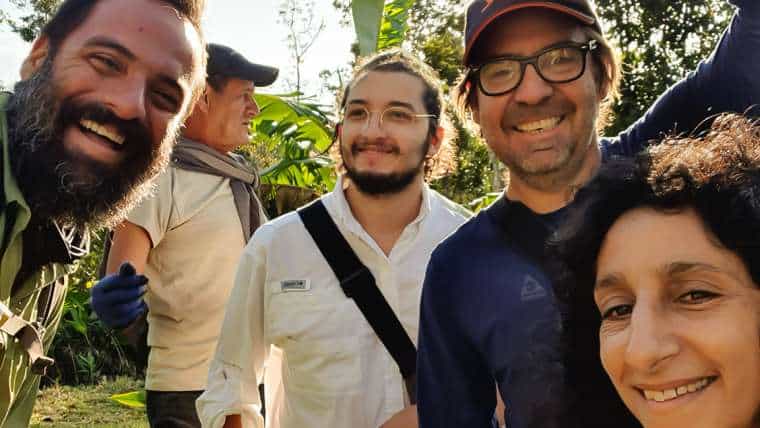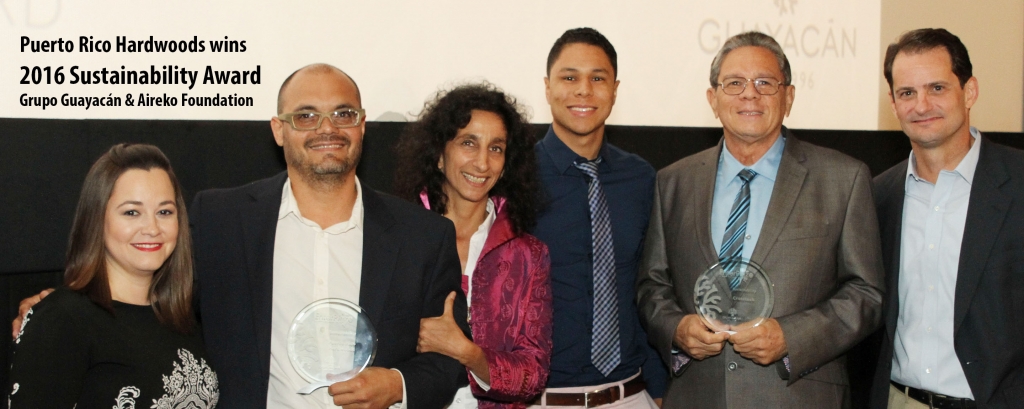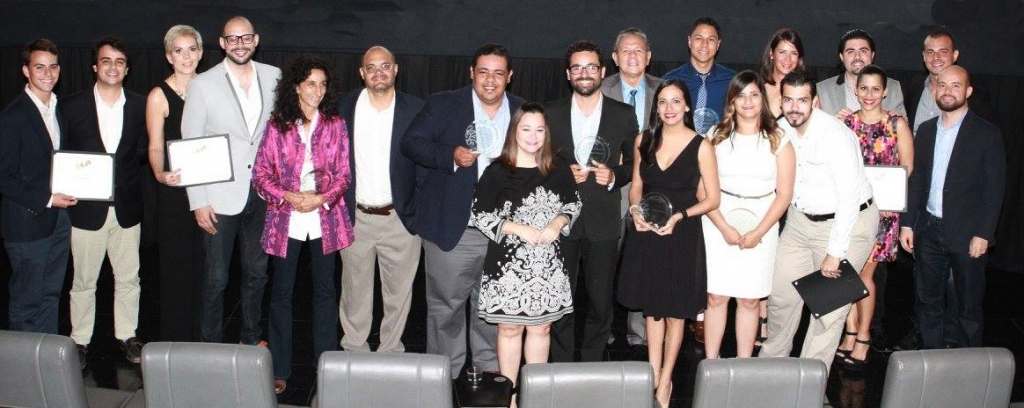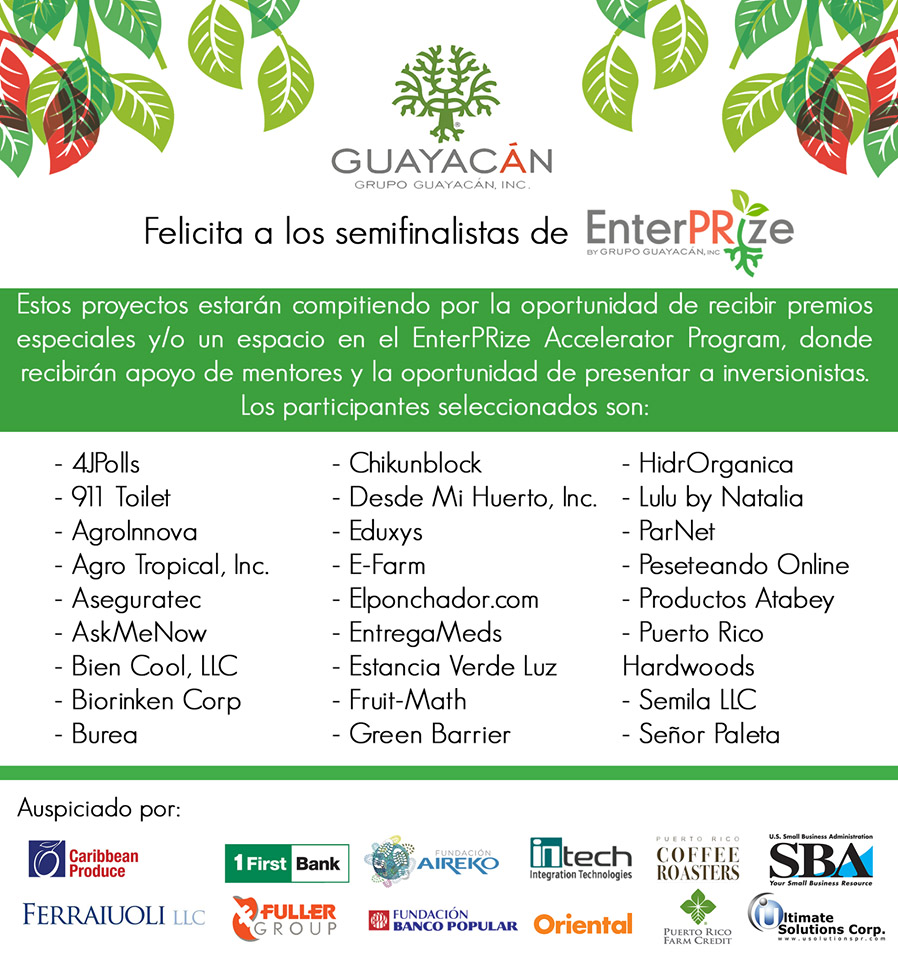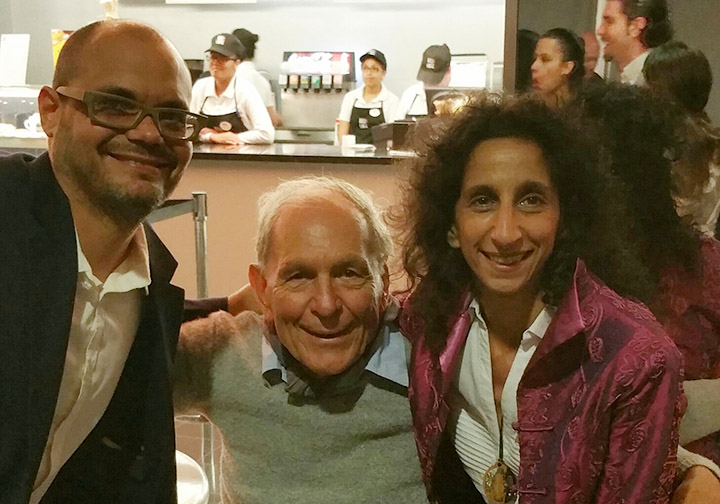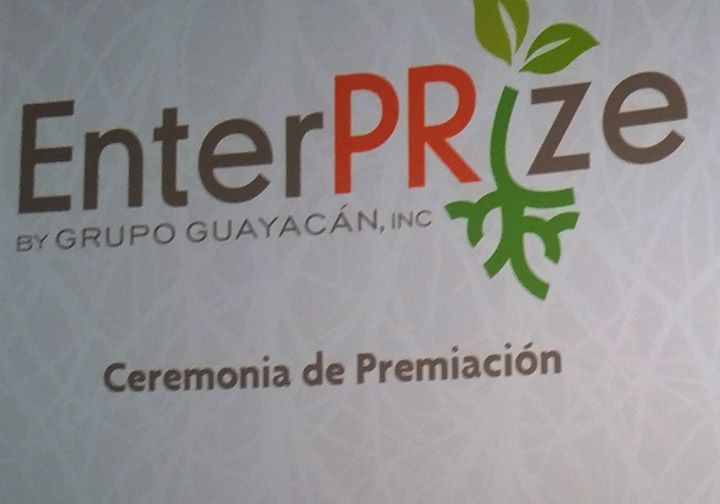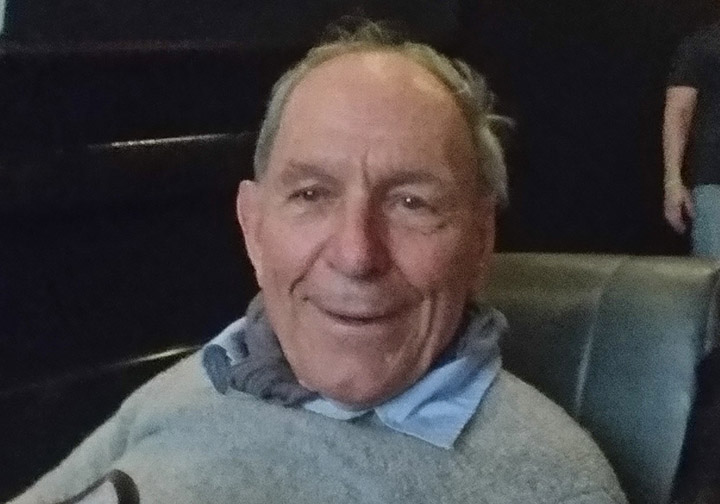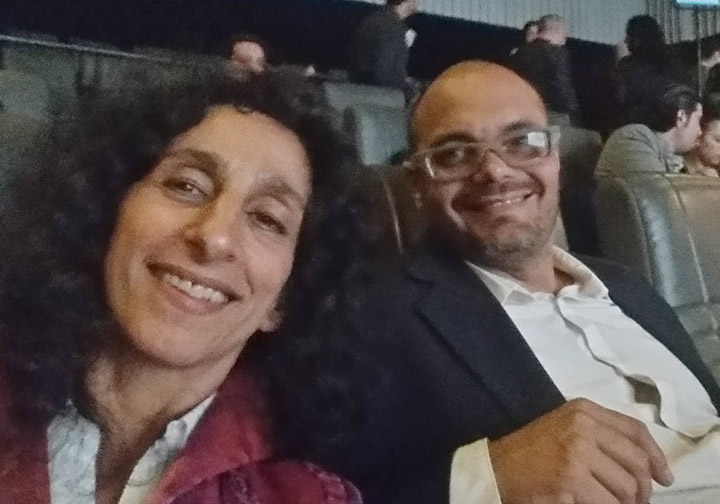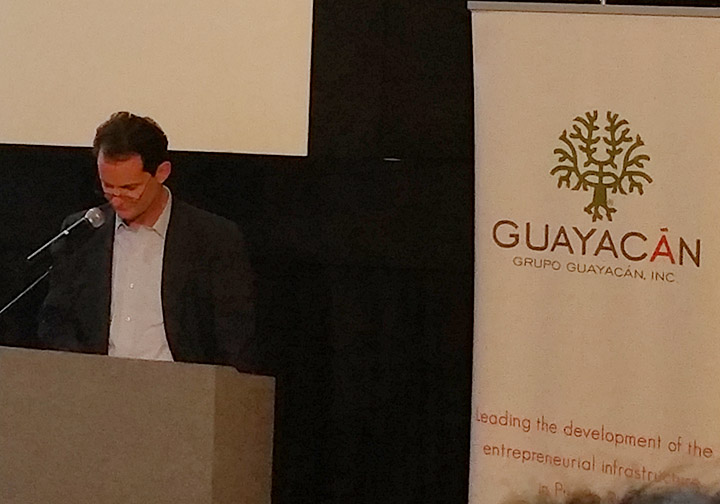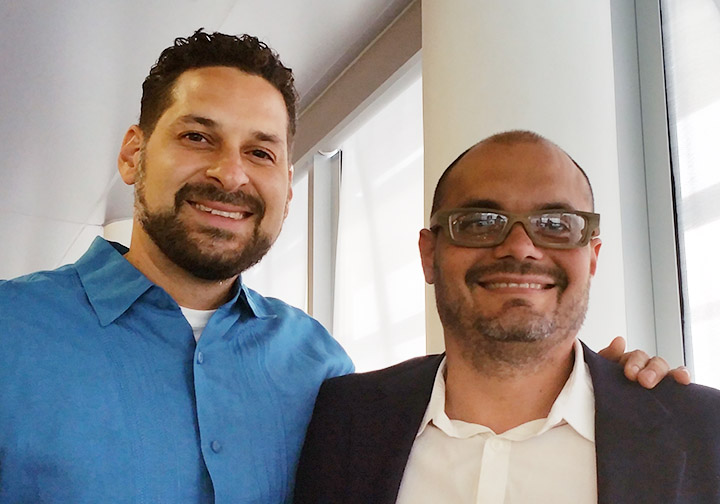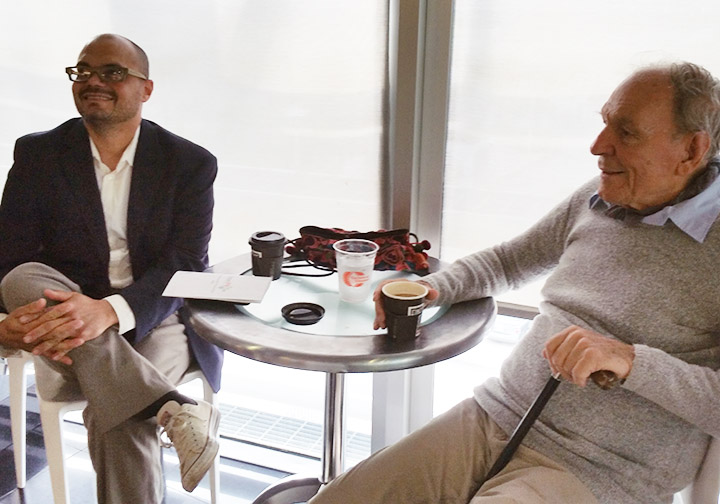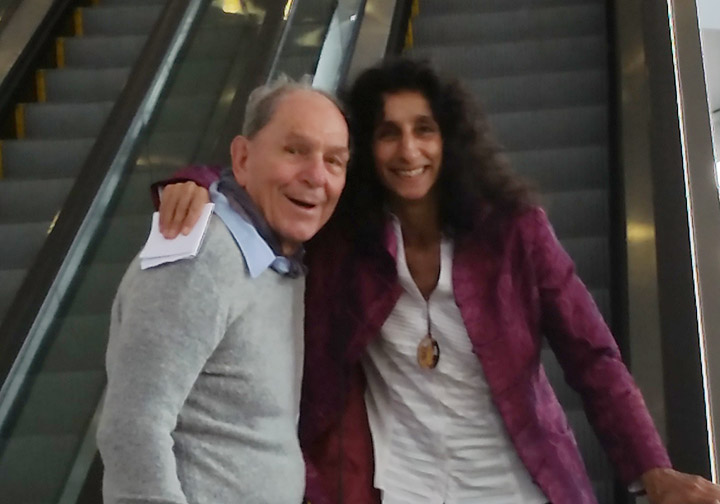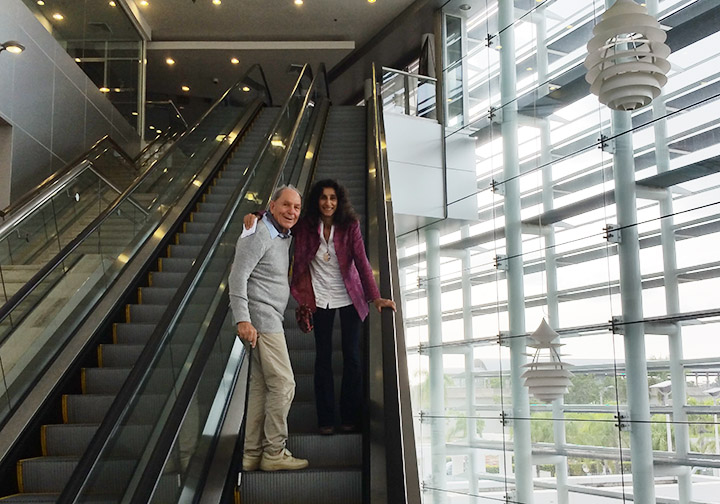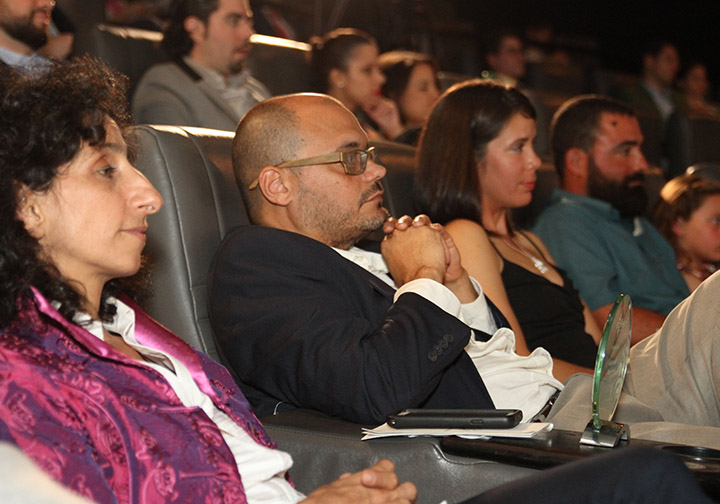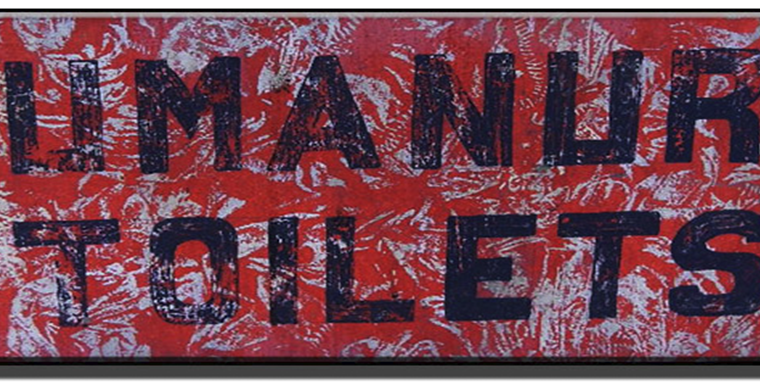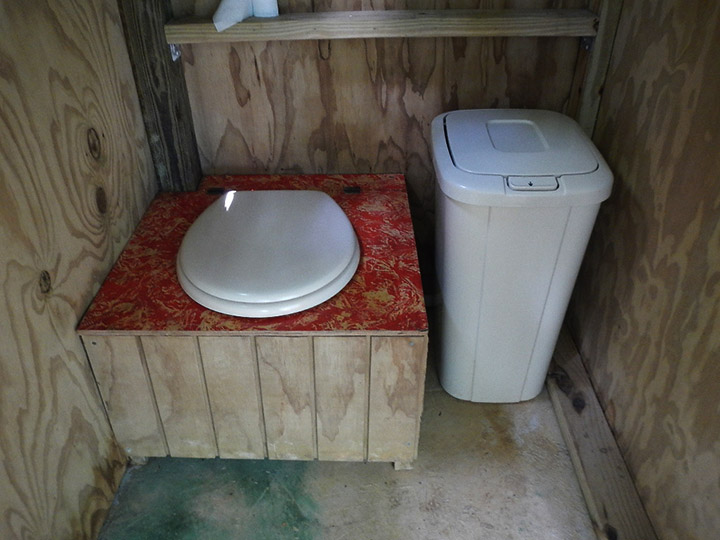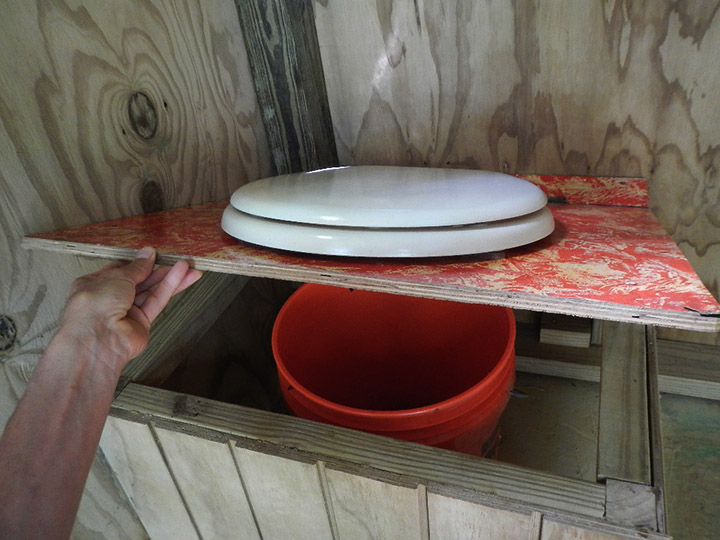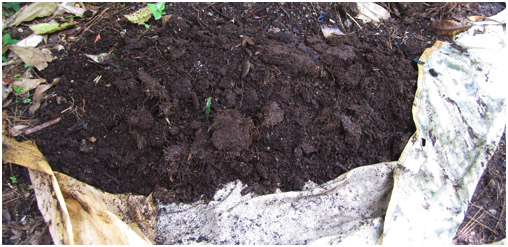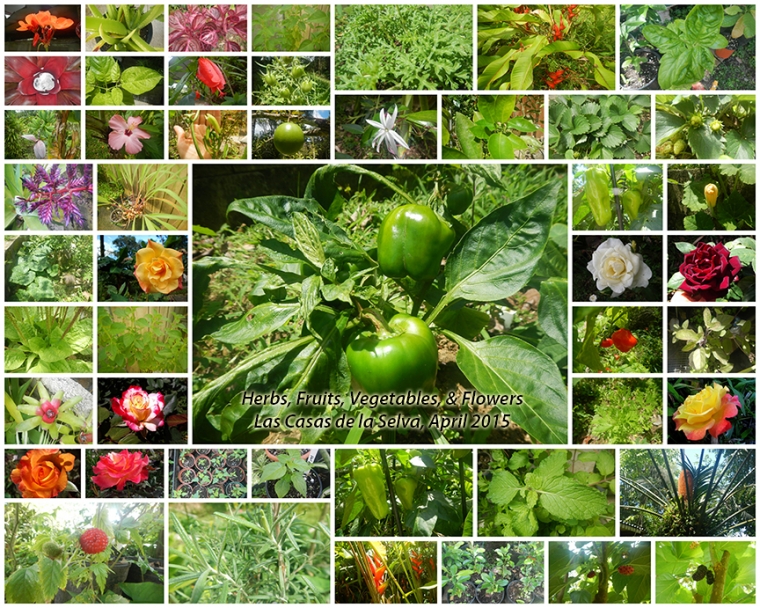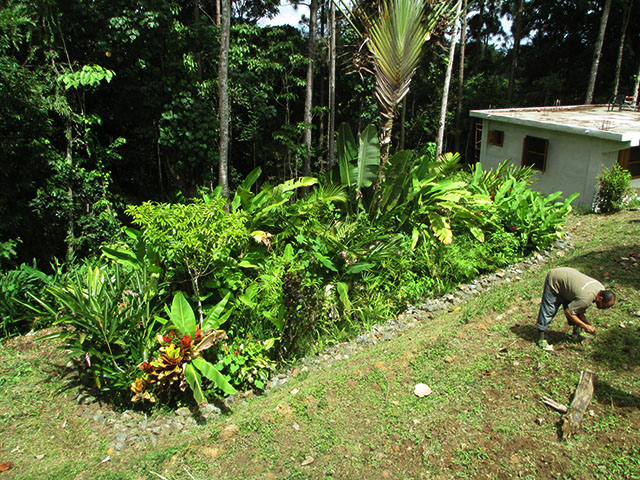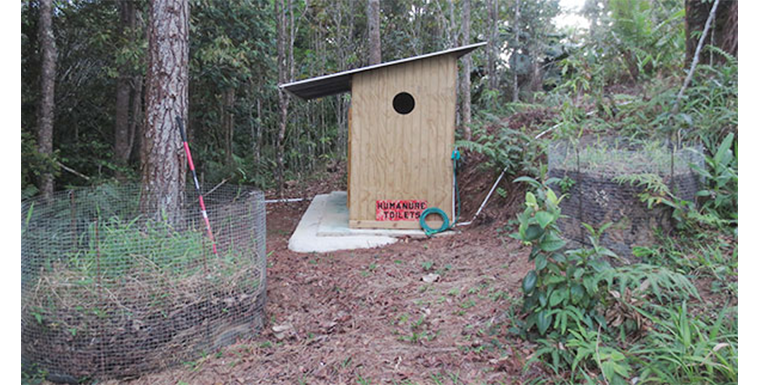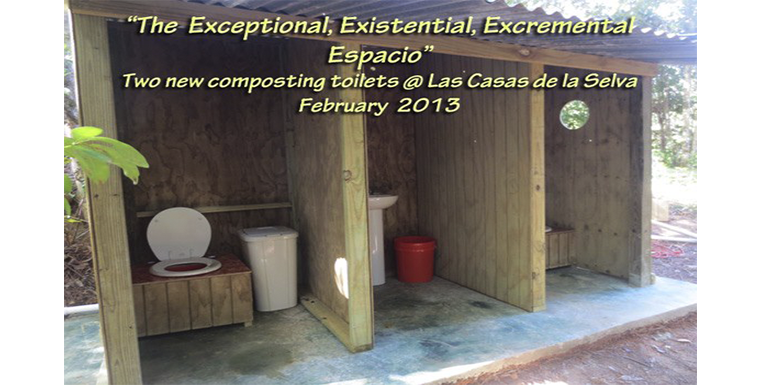For all those who partook in an Earthwatch expedition or any other volunteer escapade with myself, Thrity, Andres or Norman at Las Casas de la Selva and experienced the beauty of the project’s unique sewage system. I have good news!
I have written a book on the wonderful world of poo: “The Wastewater Gardener: Preserving the Planet One Flush at a Time” BUY IT HERE: https://wastewatergardener.com/
From the preface: “This book had its genesis the first time I tipped over an outhouse and shoveled the steaming contents into a wheelbarrow headed for the humanure compost heap. I was a city kid, I didn’t know the stuff was taboo. When I was selected to be a “biospherian” crew member for the first two year closure experiment of Biosphere 2, was it destiny that one of my responsibilities was managing our “marsh recycling system” for all the wastewater? Later, when I fell in love with wetlands, natural and constructed, I decided to make myself useful by tackling sewage problems around the world. That in turn, led me to one improbable adventure after another, a veritable Wonderland of strange goings on, at times straining my incredulity. Fortunately, I kept my inner yogas: keep your optimism and belief you can make a difference, and never lose your sense of humor!
It occurred to me these “adventures in the shit trade” have more than purely anecdotal humor value. I got to see what is hidden for good reason from most people, though sometimes it took persistence and detective work to find out what was really happening. I feel a responsibility to share what I have seen and learned with a greater audience. Everything is connected to everything (as they say in ecology), and how we manage and mismanage our shit, is a crucial part of the global challenge of our times. Conventional industrial-style agriculture doesn’t use animal manure = we turn our farms into monocultures, raise our animals in factory farms, use lots of chemical fertilizers which are expensive, release greenhouse gases and nutrients runoff our farms in great quantities polluting our waters and oceans. In the West, we centralize sewage treatment = sending all of its nutrients into our rivers and oceans, instead of back to our farms or green spaces. Rather than irrigating using gray water, we use precious high quality potable water. In poorer countries, there is virtually no effective sewage treatment at all = widespread contamination of drinking water leading to disease, death and further impoverishment.
We all know the story, “The Emperor has no Clothes”. This book is the global black comedy which unfolds when the little boy opens his eyes. I do hope you enjoy the ride. I promise it’ll change the way you think about at least one of the so-called “little things” we do in life.”
The book takes the reader on a humorous global tour of how we treat and mistreat human wastes. Even the common word for our bodily wastes: “sh*^#t” is taboo so we don’t talk about it and don’t think intelligently about how to use it properly. And our sewage is a global catastrophe. In the West we treat it like a toxic waste, spend enormous energy and resources to pump it to centralized sewage treatment plants where much machinery and chemicals are employed, then generally dump the treated wastewater with its load of freshwater and nutrients into the nearest body of water – rivers, lakes, ocean. In the developing world, 95% of sewage is untreated and pollutes drinking water everywhere.
So after a brief history of how we “got into this mess” with a review of traditional Asia where city “night soil” was a source of revenue as it was sold to boatmen who took it upriver to farmers who composted it, maintaining the fertility of the soils that produce the city’s food. Then came specialized farming so even animal wastes are now replaced by expensive chemical fertilizers, half of which run off the soils to pollute water. And for the cities, came indoor plumbing so that water use greatly increased, and flush toilets require up to 10 tons of water to move 1 ton of human waste.
But no need for despair, the paradigms are changing and there a number of alternatives which are gaining traction which offer a return to valuing and using bodily wastes as a source of valuable nutrients and water. These include composting toilets, constructed wetlands for wastewater treatment and reuse, hygienic use of sewage for agriculture and aquaponics, gray water irrigation. On the water conserving sides, there are low-water methods of farming – including drip irrigation – and utilization of wastewater which contains the natural nutrients needed for landscaping or gardening, instead of using potable water with chemical fertilizers.
I take the reader on my personal odyssey into the world of “poo power” – learning by doing.
First stop is Synergia Ranch near Santa Fe, New Mexico where a group of people found the Institute of Ecotechnics and take on reversing the desertification of this semi-arid once prosperous high grassland. A thousand trees are planted, I briefly become the “horseshit king of New Mexico” making hundreds of tons of compost from our farm animals and the 1200 horses at the nearby racetrack. Photographs contrast the stark landscape of the 1970s to the new rich oasis, with organic orchard and vegetable farm that was created.
After a stint in West Australia starting the tropical savannah project of the Institute, I return to the U.S. to help with the Biosphere 2 project – the world’s first artificial biosphere, covering 3 acres with rainforest, savannah, desert, coral reef ocean, Everglades marsh and 8 people and their farm enclosed in an air-tight structure. There is no “away” in Biosphere 2 – as in, we can “throw it away”; everything has to be recycled if the world is to sustain itself. I manage and research our constructed wetland which treats and recycles all our human, domestic animal and laboratory wastewater inside for two years. It’s a revelation and I appreciate that a system like this needs to be spread around on planet – and could be a way to get people connected to some of their basic realities – where their water comes from and where their wastes go. Constructed wetlands are a natural approach – mimicing the power of natural wetlands to serve as the planet’s kidneys – so sunlight, gravity, green plants and microbes are needed, not machinery, chemicals etc. They also can be scaled from serving an individual house to cities with tens of thousands of people. There are several which cover more than a thousand acres.
While completing a Ph.D. with the systems ecologists at the University of Florida’s Center for Wetlands, I design and build a couple of “Wastewater Gardens” along the Yucatan coast south of Cancun, Mexico (with the assistance in the early years of the Biosphere Foundation, later the Institute of Ecotechnics) and use it for my dissertation research. We make the systems beautiful with a wide diversity of fruit and flowering trees and shrubs, not just boring “reed beds”. The systems are popular – being “subsurface flow wetlands”, there is no exposed sewage, it’s all kept beneath a dry layer of gravel – and we pass the “sniff test”! Then lots of hotels and people want it for their homes – and we go into business!
This business, now called “Wastewater Gardens International” (www.wastewatergardens.com) takes me in the following decades around the world: Bali and Indonesia, the Bahamas, Western and Eastern Europe, the Caribbean, the Philippines and back to the outback in northwest West Australia, doing a number of Wastewater Garden projects on indigenous Aboriginal communities. The book takes people on a ground-truth, nitty-gritty ride of dealing with health system bureaucrats (“diaper phobia” or “nappy neurosis”), differing cultures and attitudes, Sherlock Holmesing the mysteries of what’s actually happening (e.g. wastewater waterfalls in the Atlas Mountains, 5 star resorts using unsterilized wastewater to grow lettuce (!), unsealed “septic tanks” etc.
Along the way, we have lots of examples of practical projects using a variety of new approaches, and photographs galore. New of the most recent projects are a crescent-moon shaped Wastewater Garden in southern Algeria and a proposed art/ecology project, Eden in Iraq (www.meridelrubenstein.com/eden-in-iraq/) for Marsh Arab towns in the historic Fertile Crescent area of southern Iraq.
I end the book with seven guidelines for better management of our wastes: 1. Separate shit from the water cycle wherever possible. 2. Use water of the appropriate quality, according to need 3. Conserve water – drip irrigation, low-water appliances 4. Use wastewater to create green belts 5. Treat and reuse shit locally wherever possible. 6. Don’t mix industrial waste with residential waste 7. Send the sludge and compost made from human shit back to the land in an economical way, maintaining the health and productivity of our soils
So the book is both a global black comedy and is filled with concrete examples at micro and macro-scale of how we can and are beginning to fix the problems.
The paradigms they are changin’ – appropriate in a world with scarce water resources and the desire of everyone to live in a bountiful and healthy biosphere.
…from the book’s ending:
“I would therefore like to add a Fecesphere meditation. Each time you go to the toilet to take a dump, be mindful of what you are doing. “Where does my water come from?” “Where does my shit go?” Then perhaps, investigate, find out. You will be way more connected to reality by trying this simple meditation and you’ll come to understand how life on this planet is indeed sustained. Then ask: “How can I make this activity healthier for my local ecosystem and indeed the biosphere?” “How can I change the world?”
The answer is not in the glorious, perfected hereafter (“there’ll be pie in the sky when you die”) but right now, beginning with understanding the “travel itinerary” of your shit. How do we change the world, help create the Earth we want and need? No action is trivial or unimportant.
We change the world one small step at a time, one flush at a time.”
Here is the Wastewater Garden at Las Casas de la Selva…



